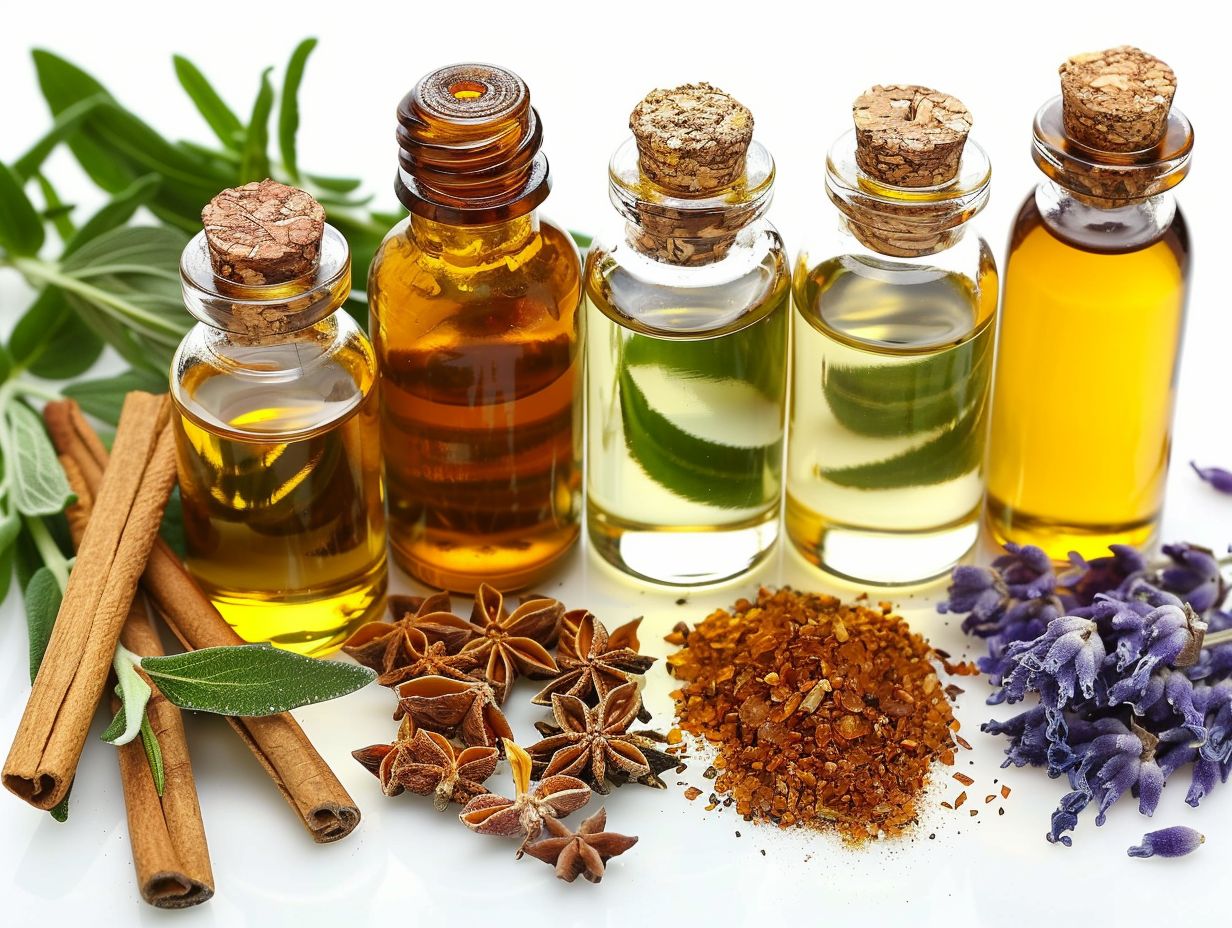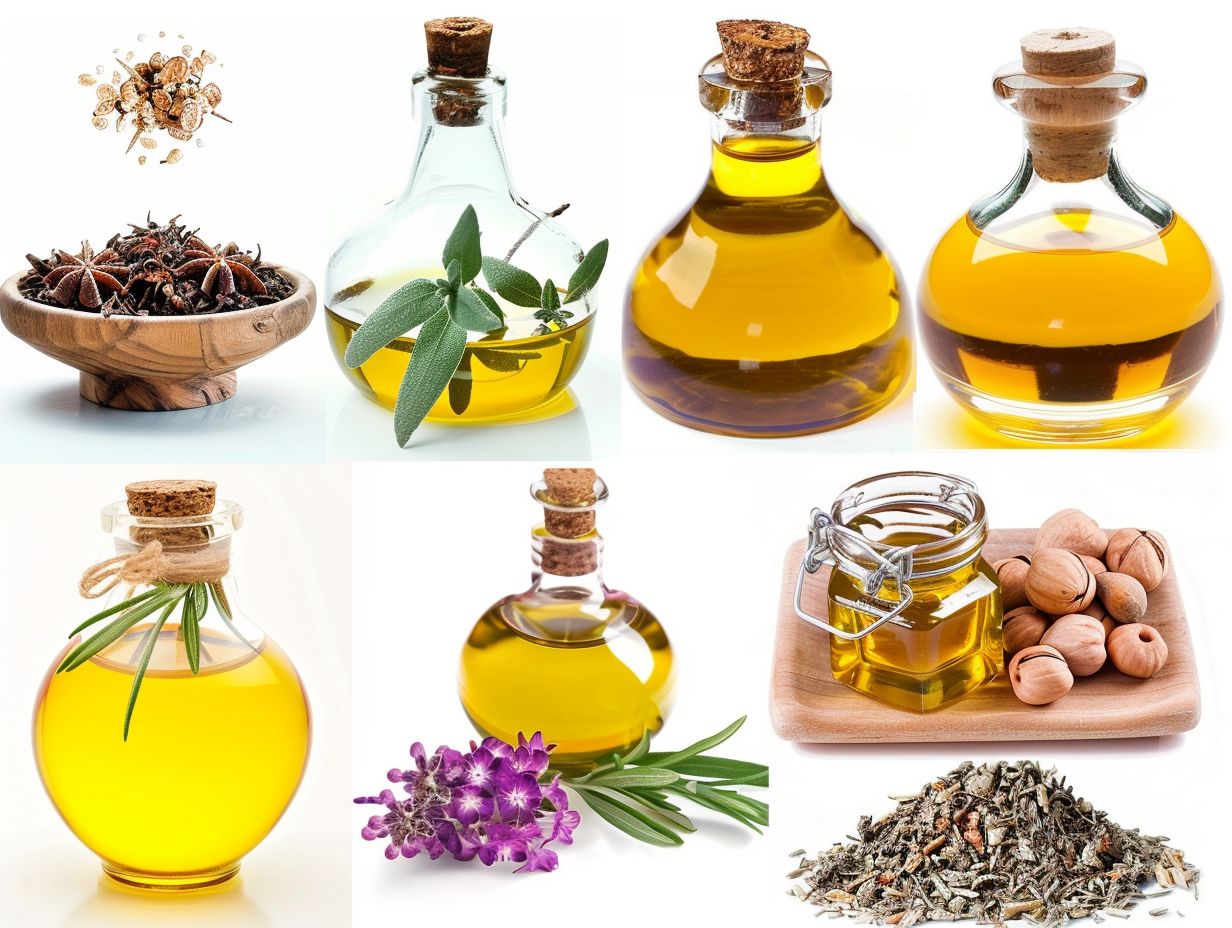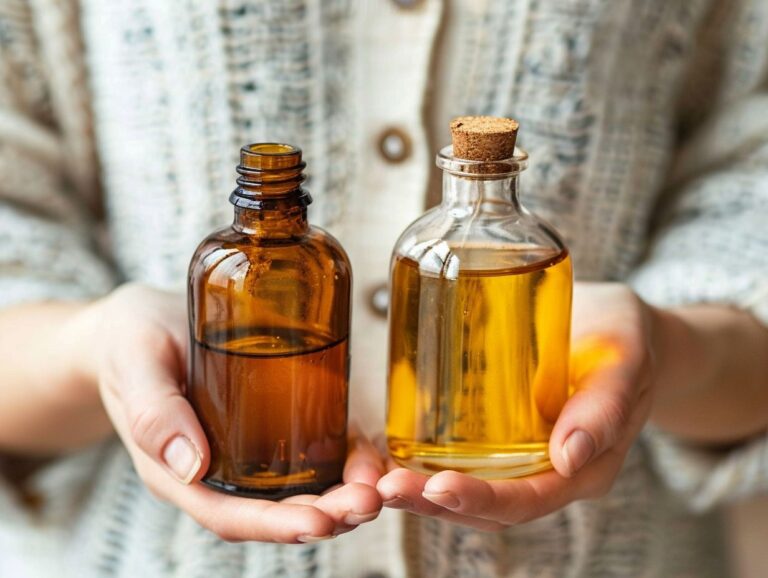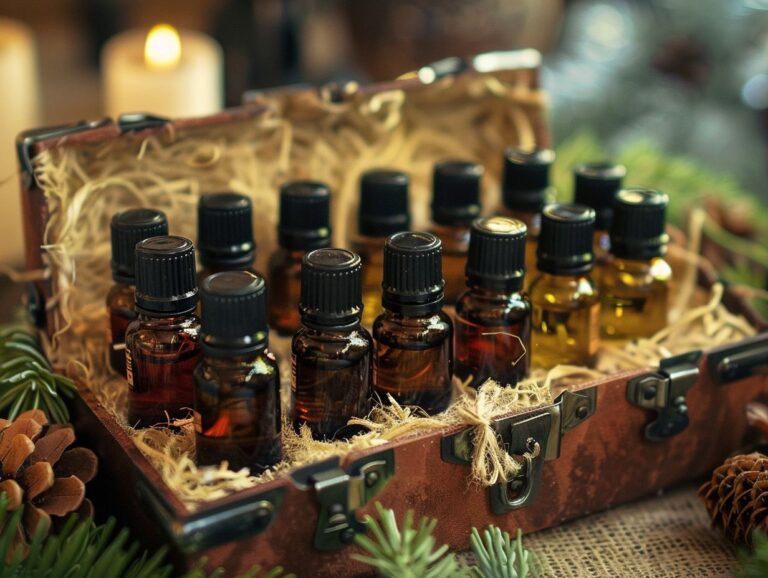How Essential Oils Differ From Fatty Oils
Are you curious about the benefits of essential oils and fatty oils, but not sure where to start?
We will explore the differences between essential oils and fatty oils, how each is extracted, and the various ways they can benefit the body and mind.
From the uses of essential oils to the methods of using them, we will cover everything you need to know to incorporate these natural oils into your daily routine.
Let’s dive in and discover the wonders of essential and fatty oils!
Key Takeaways:
Understanding Essential Oils and Fatty Oils
Understanding Essential Oils and Fatty Oils involves diving into the world of plant-derived oils with distinct properties and uses. These oils are extracted from various plants through different methods to preserve their natural characteristics and aromas.
Essential oils are highly concentrated extracts obtained from aromatic plants, such as lavender, peppermint, and eucalyptus. These oils are renowned for their therapeutic benefits, often used in aromatherapy and natural skincare products. On the other hand, fatty oils, also known as carrier oils, are derived from the fatty portion of plants like coconut, olive, or jojoba. They are commonly used to dilute essential oils for safe application on the skin.
The extraction methods play a crucial role in maintaining the purity and effectiveness of these oils. Cold pressing involves pressing the plant material to extract the oils without the use of heat, ideal for delicate oils like citrus. Alternatively, steam distillation utilizes steam to separate the essential oils from the plant material based on their volatility.
Both types of oils carry the essence of the plant they are derived from, providing a natural and holistic approach to wellness and beauty care. Whether diffused, applied topically, or ingested (in certain cases with essential oils), these oils offer a myriad of benefits for physical and emotional well-being.
What are Essential Oils?
Essential oils are concentrated extracts derived from aromatic plants through methods like steam distillation or cold pressing. These oils contain various compounds responsible for their distinct chemical properties, offering therapeutic effects for health and beauty purposes.
In terms of the chemical nature of essential oils, they are composed of a complex array of volatile compounds such as terpenes, alcohols, esters, and phenols. These compounds not only give essential oils their unique aroma but also contribute to their therapeutic benefits. For instance, lavender oil contains linalool and linalyl acetate, which have calming and stress-relieving properties. Such characteristics make essential oils versatile for use in aromatherapy, skincare, and holistic wellness practices.
How are Essential Oils Extracted?
Essential oils are extracted through processes like steam distillation and cold pressing, where the volatile molecules from botanical sources are preserved through a physical extraction process.
In steam distillation, the most common method for extracting essential oils, steam is passed through the plant material, causing the volatile compounds to evaporate. The steam and essential oil vapor are then condensed back into a liquid form, with the oil floating on top, ready for collection.
On the other hand, cold pressing involves mechanically pressing the botanical material, such as citrus peels, to release the aromatic oils. This method is ideal for delicate plant materials that cannot withstand the heat of steam distillation.
Both extraction methods are aimed at capturing the essence of the plant while preserving its aromatic compounds intact, ensuring that the resulting essential oils retain their therapeutic properties.
What are Fatty Oils?
Fatty oils, also known as vegetable oils, are lipid-rich substances derived from plants. These oils can be unrefined and consist of saponifiable and unsaponifiable components.
Fatty oils play a crucial role in nutrition and skincare due to their lipid-rich nature, providing essential fatty acids. The unrefined versions retain more nutrients and flavor compared to their refined counterparts.
Saponifiable components are those that can undergo saponification, a process that turns them into soap. On the other hand, unsaponifiable components include substances like vitamins, sterols, and hydrocarbons, which bring additional benefits to the oils.
What are the Differences Between Fatty Oils and Essential Oils?

One key distinction lies in the extraction process where fatty oils are usually cold-pressed from seeds, nuts, or fruits, whereas essential oils are extracted through methods like distillation or expression.
The quality of essential oils is determined by factors like purity, therapeutic properties, and the plant’s origin, while fatty oils are valued for their nourishing and moisturizing properties.
Benefits of Essential Oils
Essential oils offer various benefits for health and wellness, with therapeutic effects suitable for skincare routines and aromatherapy practices. These oils contain antioxidants that can enhance skin health and overall well-being.
Antioxidants found in essential oils play a crucial role in protecting the skin from free radicals, thereby reducing signs of aging and promoting a more youthful appearance. When used in skincare products, these oils can help nourish and hydrate the skin, improving its texture and elasticity. In addition, the aromatic properties of essential oils have been known to alleviate stress, improve mood, and enhance relaxation during aromatherapy sessions. With their diverse benefits, essential oils have become popular natural remedies in skincare and wellness routines.
What are the Different Uses of Essential Oils?
Essential oils have diverse applications, including their use as massage oils, in aromatherapy practices, and for dilution in skincare products. It is essential to take necessary precautions when working with undiluted essential oils.
When utilized as massage oils, essential oils not only enhance the tactile experience but also provide potential therapeutic benefits, aiding in relaxation and reducing muscle tension. In aromatherapy applications, these oils can stimulate the senses, promote relaxation, or even uplift the mood.
When properly diluted, essential oils can complement various skincare products, offering natural fragrances and potential skin benefits. It’s crucial to note that undiluted essential oils are highly concentrated and can cause skin irritation or adverse reactions, emphasizing the importance of always diluting them before use.
How Do Essential Oils Benefit the Body and Mind?
Essential oils offer therapeutic effects that benefit both the body and mind, promoting overall health and wellness.
These oils contain essential nutrients like omega-3 fatty acids and vitamins that support various bodily functions.
Omega-3 fatty acids found in essential oils, such as fish oil, have been linked to reducing inflammation, improving heart health, and supporting brain function.
Similarly, vitamins present in essential oils, like Vitamin E in lavender oil, play a vital role in skin nourishment and rejuvenation.
Benefits of Fatty Oils
Fatty oils offer nutritional benefits due to their omega-6 and omega-9 fatty acid content, along with essential vitamins that support overall health. These oils are manufactured using various methods to preserve their nutritional value.
One common method used in oil manufacturing is cold-pressing, which involves extracting the oils at lower temperatures to retain the nutrients. This process helps prevent degradation of sensitive components like vitamin E. On the other hand, oils produced through solvent extraction may undergo refining processes to remove impurities but may also result in nutrient loss. Understanding these manufacturing techniques is crucial in selecting oils that offer optimal health benefits.
What are the Different Uses of Fatty Oils?

Skincare enthusiasts have long embraced the benefits of fatty oils for their nourishing and hydrating properties. These oils, rich in essential fatty acids like Omega-3 and Omega-6, help maintain the skin’s natural barrier function, promoting a healthy complexion. In cosmetics, fatty oils are used as emollients, imparting a luxurious texture to creams, lotions, and serums. Their ability to improve skin elasticity and protect against environmental stressors has made them essential in anti-aging formulations.
In terms of fragrances, certain fatty oils add depth and richness to perfume compositions. Oils like jojoba and coconut not only serve as carriers for scent molecules but also impart a subtle aroma of their own, enhancing the overall olfactory experience. This harmonious blend of skincare, cosmetics, and fragrance properties underscores the diverse and integral role that fatty oils play in the realm of beauty and personal care.
How Do Fatty Oils Benefit the Body?
Fatty oils provide essential nutrients for the body, supporting overall health and nutrition. Their saponifiable and unsaponifiable components contribute to various health benefits, although precautions should be taken to avoid neurotoxic effects.
Essential fatty acids found in fatty oils, such as omega-3 and omega-6, play a crucial role in maintaining brain function, heart health, and reducing inflammation in the body. These oils are rich in vitamins E and K, which are essential for healthy skin, hair, and overall immunity.
The unsaponifiable components, like phytosterols and polyphenols, possess antioxidant properties that help in neutralizing harmful free radicals, thereby reducing the risk of chronic diseases.
It is important to be mindful of proper dosage and quality of fatty oils to prevent any potential adverse effects, especially in cases of neurotoxicity. Consulting a healthcare professional before incorporating new oils into your diet is advised.
How to Use Essential Oils and Fatty Oils
Utilizing essential oils and fatty oils involves various methods such as dilution for safe application and taking necessary precautions to prevent adverse reactions. These oils are commonly used in aromatherapy practices for their therapeutic effects.
One popular technique for using essential oils is through inhalation, where the oils are added to a diffuser or inhaled directly from the bottle. This method allows for quick absorption and can promote relaxation or invigoration depending on the oil used.
Another method is topical application, where essential oils are diluted in a carrier oil before being applied to the skin. This helps prevent skin irritation and ensures proper absorption of the oils into the body.
Oral ingestion of essential oils should only be done under the guidance of a qualified professional due to potential risks and safety concerns.
What are the Different Methods of Using Essential Oils?
Essential oils can be utilized through methods like cold expression and mechanical extraction, ensuring the preservation of chemotyped profiles for consistent quality and therapeutic benefits.
Cold expression, also known as cold pressing, involves applying pressure to plant material to extract essential oils without using heat. This method is commonly used for citrus oils like lemon and orange, as it helps retain the fresh aroma and chemical composition of the oils.
On the other hand, mechanical extraction, such as steam distillation, uses water vapor to separate essential oils from plant matter. By carefully controlling temperature and pressure, this technique ensures the preservation of the chemically active compounds, known as chemotypes, which contribute to the unique therapeutic properties of each oil.
What are the Different Ways to Use Fatty Oils?
Fatty oils can be incorporated into various applications through methods like distillation, ensuring allergen-free formulations, and maintaining botanically defined properties for optimal use.
By subjecting fatty oils to distillation processes, the volatile components can be separated, allowing for the creation of allergen-free products suitable for sensitive individuals. This method not only removes potential allergens but also helps in enhancing the purity and safety of the oils. The distillation process preserves the botanically defined characteristics of the oils, ensuring that their natural properties and benefits are retained. Such meticulous techniques not only elevate the usability of fatty oils but also uphold their integrity, making them versatile ingredients in various industries.
Frequently Asked Questions
What is the difference between essential oils and fatty oils?
The main difference between essential oils and fatty oils is their chemical composition. Essential oils are made up of volatile compounds extracted from plants, while fatty oils are made up of fatty acids and are typically extracted from animal or plant sources.
Do essential oils and fatty oils have different uses?
Yes, essential oils and fatty oils have different uses. Essential oils are primarily used in aromatherapy and for their therapeutic properties, while fatty oils are commonly used in cooking, skincare, and as carrier oils for essential oils.
What is the extraction process for essential oils and fatty oils?
Essential oils are extracted through methods such as steam distillation, cold pressing, or solvent extraction, while fatty oils are typically extracted through methods such as heat or pressure.
Can essential oils and fatty oils be used together?
Yes, essential oils and fatty oils can be used together. Fatty oils can act as carrier oils for essential oils, helping to dilute them and make them safe for topical use. They can also enhance the benefits of essential oils when used together.
Are essential oils and fatty oils safe for consumption?
Not all essential oils and fatty oils are safe for consumption. Some essential oils should not be ingested at all, while fatty oils used for cooking should be consumed in moderation. It is important to research and properly dilute and use oils for consumption.
How do essential oils and fatty oils differ in terms of shelf life?
Essential oils have a longer shelf life than fatty oils due to their concentrated nature and antimicrobial properties. Fatty oils can go rancid over time if not stored properly, but essential oils can last for years if stored in a cool, dark place.








